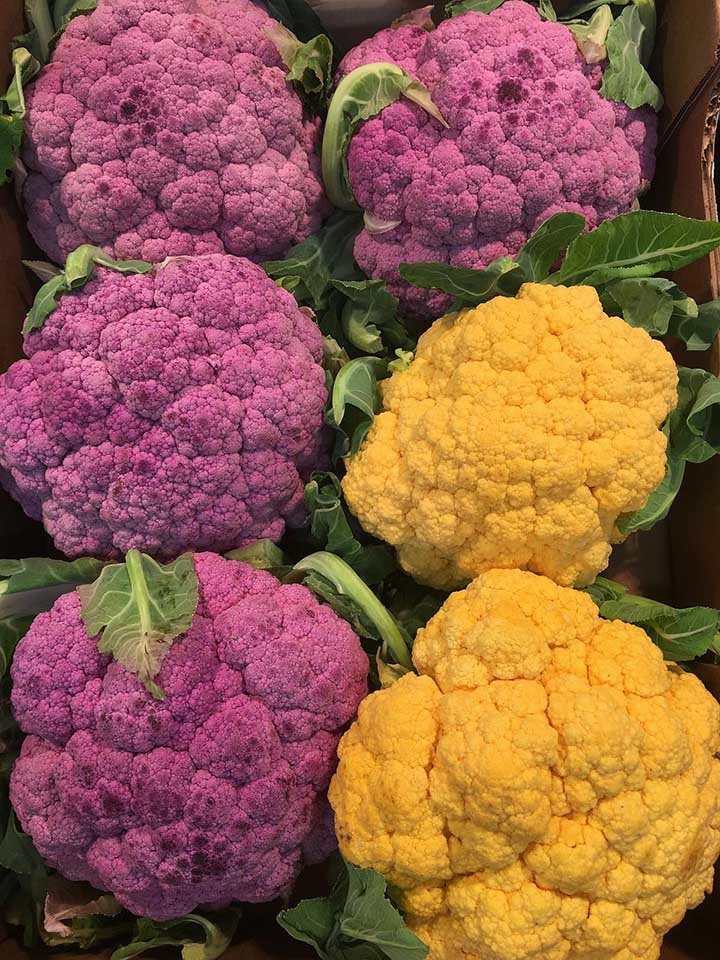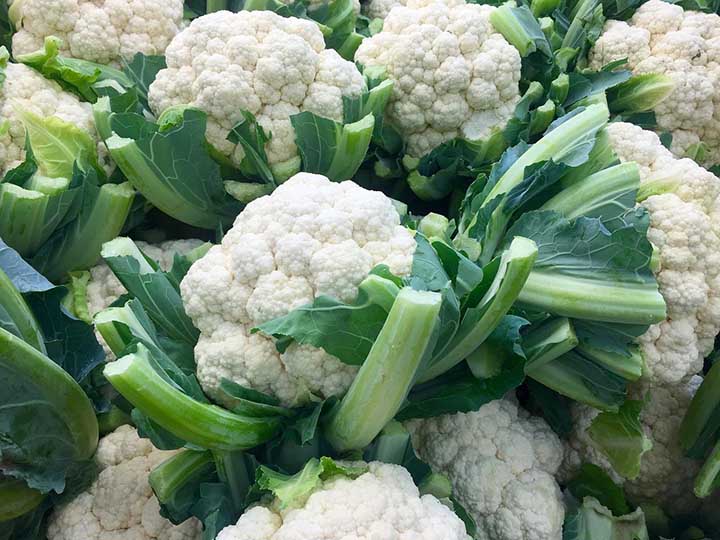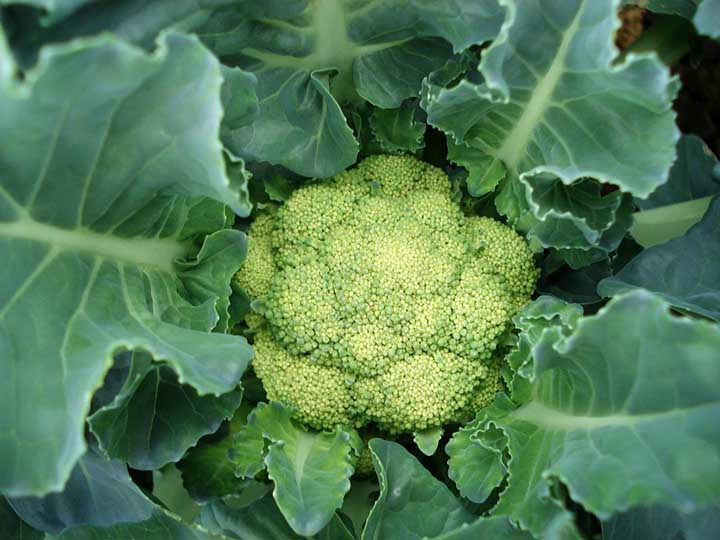Cauliflower (Brassica oleracea var. Botrytis) is a popular vegetable right now. It is a Brassica, or Cole crop, related to cabbage, broccoli, Brussels sprouts, and kohlrabi. Because cauliflower is picky about its growing temperature, you may be wondering, “Can cauliflower grow in the summer?”
Cauliflower is one of the hardest Brassicas to grow. This guide will show you how you can grow cauliflower in the summer.
Can Cauliflower Grow in Summer?
Yes, you can grow cauliflower in the summer. Cauliflower produces curds in temperatures between 50-70 degrees F. Planting the cauliflower in the summer allows the plant to put on plenty of foliage before the cool weather starts. The curd will then form after the temperature is below 70 degrees F.
Table of Contents
How Do I Know If I Can Grow Cauliflower in the Summer?
The goal when planting cauliflower is to have the curd growing when the temperature is above 50 degrees but below 75 degrees F. The curd will not form properly if the temperature is over 75 degrees F.
Cold temperatures are a problem, too. Cauliflower is half-hardy. The leaves are burned by frost, but the head will tolerate light freezes. However, the whole plant dies at temperatures below 25 degrees F.
Everyone can plant a fall crop starting in the summer. The goal with this crop is to let the plant foliage grow while it is still warm. If you time it right, the curd will form when the temperature cools below 70 degrees F but before it freezes.
Cauliflower Varieties for Summer Growing

Different varieties of cauliflower grow best in the spring and the summer. Here are some suggestions for varieties to grow in the summer for harvest in the fall.
Early White
As the name implies, this variety grows quickly. Curds are ready in 52 days and are nine inches in diameter.
Amazing
An open-pollinated variety, Amazing grows firm, white curds in 68 days. In addition, it is self-blanching, meaning the leaves shade the curds without your help.
Twister
The leaves of this hybrid twist over the curd, so you don’t have to blanch it. Twister is ready in 62 days.
Symphony
This cauliflower grows a head up to a foot in diameter. Plant in late spring for harvest in the fall. It takes 96 days to reach maturity. You can plant this in the late summer in climates where the winter is mild and harvest it in the spring.
Graffiti
Are you looking to spice up your harvest? Graffiti is a purple cauliflower that takes 80 days to form medium-sized curds. This cauliflower tolerates humidity and is resistant to fungal diseases.
DePurple
Sprinkle with lemon juice or vinegar before cooking, so this purple curd stays purple after cooking. Harvest 7.5-8-inch heads in 68 days.
Lavender
Lavender is more violet in the fall. A hybrid, Lavender produces medium-tight heads low in bitterness and makes great raw snacks in 70 days.
Cheddar
As the name implies, this variety is yellow. A hybrid, Cheddar produces medium-sized heads in only 58 days.
Synergy
A hybrid white cauliflower, Synergy takes 60 days to produce medium to large curds. It is self-blanching.
Vitaverde
A green cauliflower, this hybrid produces large heads in 71 days. It works well in cool areas.
Tips on Growing Cauliflower in Summer
In summer-grown cauliflower, the goal is to grow the foliage while it is hot. Here are some tips.
- Space the plants so they have room to grow lots of foliage. Put them 24 inches apart.
- You can sow cauliflower seeds directly in the ground in the summer. Put three seeds every 24 inches. Pinch off the two weakest seedlings at the soil line when the seeds come up.
- Use row covers to protect the cauliflower plants for the first few weeks they are growing. Choose white fabric row covers that are light and let heat escape.
- The days to harvest label is for transplants. If starting seeds, count back another 25 days.
What Should I Pay Attention to When Growing Cauliflower in Summer?
Cauliflower produces the best curds when it grows smoothly from seed to harvest size. Anything that causes the plant stress can interrupt the growth of the curd and spoil it. Here are the things you need to provide to keep your plant growing well and help it produce a good curd.
Sunlight
Cauliflower plants need at least six hours of sun a day. In hot climates, afternoon shade is desirable.
Soil and pH
You need well-drained soil for cauliflower to grow well. Add about three inches of compost, where you will plant your cauliflower, and mix it into the top six inches of dirt. The pH needs to be between 6-7.
Water
Drought stress will cause curd growth to stop. Cauliflower plants need moist soil. Give them an inch of water a week. In sandy soils or very hot climates, you may need to water more often to keep the soil moist.
Fertilizer
Do a soil test before planting your cauliflower. Follow the test recommendations for fertilizing your plants. Without a soil test, use a balanced vegetable fertilizer right before transplanting the cauliflower. Mix it in the top three inches of soil and water it in before planting your seedlings. Then, side dress the plants with fertilizer during the growing season according to the directions on the package.
Weed Removal
Cauliflower has very shallow roots. Do not use a hoe or other implement to weed. Instead, hand weed frequently. Weeds steal water, nutrients, and sun from cauliflower. Good curd-producing plants cannot afford to lose anything to weeds, so keep the area around the cauliflower weeded.
Harvesting
Curds should be harvested when they are still firm and compact. Some varieties grow heads of six inches, while others grow up to nine inches. Leaving the curds on the plant too long will reduce the quality and can lead to bolting, which is premature seed stalk formation.
Frequently Asked Questions
What temperature is too hot for cauliflower?
When the temperature reaches 75 degrees F, the curd stops forming and usually bolts. The flavor grows bitter, and the head gets fibrous and unpleasant to eat.
Can cauliflower get too much sun?
Yes, six hours of morning sun with afternoon shade is best in areas where it is hot. You can use shade cloth to help keep the cauliflower plant cooler in hot climates.
Can I plant cauliflower seeds in summer?
You can plant cauliflower seeds directly in the ground in the summer. However, it takes about 25 extra days for the curd to grow to harvest size if you plant the seeds directly in the ground. Directions for starting cauliflower outside by seed are given above.
What is blanching cauliflower?
White cauliflower curds will sunburn. When the curd is about the size of a golf ball, you need to blanch it by taking the leaves around the curd and tenting them over the curd to shade it. Hold the leaves there with a clothespin. The curd is ready to harvest when the curd is about six inches in diameter. It usually takes a week or two after you start blanching the curd for it to reach harvest size.

In conclusion, you can grow cauliflower in the summer. You plant the cauliflower so that the foliage grows large in the summer. The curd forms on big healthy plants when it gets cooler in the fall. You get a bigger, firmer head when you start with healthy plants.
